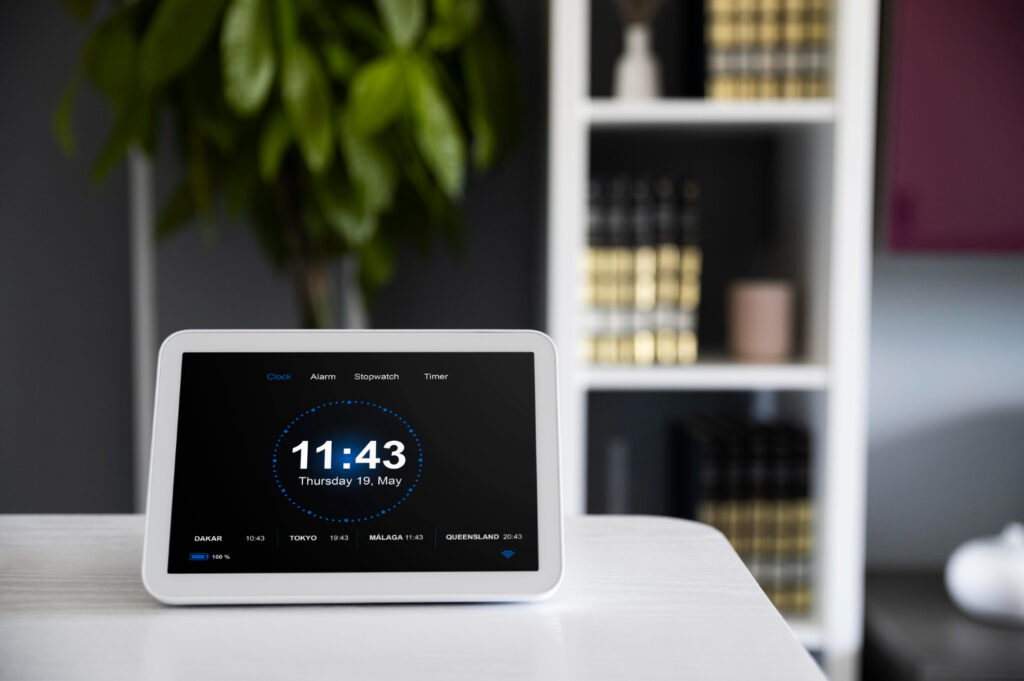Transform Your Home with Smart Lighting: Complete Guide 2025

Introduction
The way we light our homes is changing rapidly, and smart lighting is leading this transformation. In 2025, homeowners are no longer satisfied with traditional bulbs; they want lighting that adapts to their mood, routine, and lifestyle. Whether you want to boost comfort, save energy, or modernize your home, smart light offers endless possibilities.
This complete guide will show you how to choose, install, and maximize the benefits of smart lighting in your home — from smart bulbs and switches to automation and voice control.
What Is Smart Lighting?
Smart lighting refers to lighting systems that can be controlled remotely using your smartphone, voice assistant, or smart home hub. Unlike traditional lights, smart bulbs connect via Wi-Fi, Bluetooth, or Zigbee, allowing you to change brightness, color, and even set schedules.
Popular smart lighting systems include:
- Philips Hue
- LIFX
- Nanoleaf
- TP-Link Kasa
- Govee Smart Lights
Each system offers unique features, but all aim to make your home more intelligent, energy-efficient, and personalized.
Why Smart Lighting Matters in 2025
Smart lighting has evolved from a tech luxury to a home necessity. With AI integration, energy monitoring, and adaptive scenes, 2025’s smart lights are smarter than ever.
Key Benefits of Smart Lighting
1. Energy Efficiency
Smart bulbs use LED technology and can reduce your electricity bill by up to 75%. Automated scheduling ensures lights are off when not needed.
2. Personalized Ambiance
Adjust color temperatures to match your activity — cool white for productivity and warm tones for relaxation.
3. Convenience & Control
Control your entire lighting system through voice commands via Alexa, Google Assistant, or Siri.
4. Enhanced Security
Set lights to turn on automatically when you’re away to simulate presence, adding an extra layer of home security.
5. Mood and Wellness Boost
Smart lighting supports circadian rhythm lighting, which helps regulate sleep and mood by mimicking natural daylight cycles.
How to Build Your Smart Lighting System
Step 1: Choose Your Ecosystem
Before buying smart bulbs, choose a compatible ecosystem. The most popular are:
- Google Home (best for Android users)
- Amazon Alexa
- Apple HomeKit
Make sure all devices support your preferred ecosystem for seamless integration.
Step 2: Select Your Smart Lighting Devices
There are several types of smart lighting devices:
- Smart Bulbs: Replace standard bulbs (e.g., Philips Hue, LIFX).
- Smart Switches: Great for whole-room control.
- Smart Light Strips: Ideal for decorative or accent lighting.
- Smart Outdoor Lights: Perfect for gardens and driveways.
Each type serves a unique purpose. Combining them creates a fully automated lighting environment.
Step 3: Connect and Configure
- Install the bulbs or switches.
- Connect them to your Wi-Fi network.
- Use the manufacturer’s app for setup and configuration.
- Link your system to your preferred voice assistant for hands-free control.
Smart Lighting Trends to Watch in 2025
The smart lighting market is rapidly expanding with new innovations. Here are the top trends shaping 2025:
1. AI-Powered Lighting Automation
AI analyzes your behavior and adjusts lighting automatically based on your schedule, weather, or activity.
2. Energy Monitoring
New lighting systems provide real-time data on energy usage, helping you track and reduce consumption.
3. Sustainable Smart Materials
Manufacturers are focusing on eco-friendly materials and low-energy components.
4. Dynamic Scene Creation
You can now sync lights with your favorite music, movies, or games for immersive experiences.
5. Matter Protocol Compatibility
Most new lighting systems now support Matter, the universal smart home standard, ensuring cross-platform compatibility.
How Smart Lighting Enhances Home Design
Lighting isn’t just functional — it’s aesthetic. Smart lighting allows you to highlight architectural details, art, or create a modern atmosphere effortlessly.
Use Cases:
- Living Room: Create cozy movie scenes with dimmed warm lighting.
- Kitchen: Bright, cool lights for cooking efficiency.
- Bedroom: Soft tones for a calm bedtime environment.
- Office: Adjust brightness automatically for focus and comfort.
Smart lighting combines design and functionality, turning your space into a connected masterpiece.
Common Mistakes to Avoid
- Ignoring Compatibility: Always ensure your bulbs and hubs work within the same ecosystem.
- Poor Network Setup: Smart devices need a stable Wi-Fi connection.
- Skipping Automation: Use scenes and schedules to maximize benefits.
- Overcomplicating Setup: Start simple, then expand gradually.
Top Smart Lighting Brands in 2025
Here are some trusted brands to consider:
- Philips Hue – Industry leader with vast ecosystem compatibility.
- Govee – Affordable and colorful lighting solutions.
- LIFX – No hub required and offers vibrant colors.
- TP-Link Kasa – Reliable smart switches and bulbs.
- Nanoleaf – Known for innovative wall panels and dynamic effects.
For detailed comparisons, visit TechRadar’s Smart Lighting Guide.
Conclusion
Smart lighting has redefined how we live, work, and relax at home. In 2025, it’s not just about switching lights on and off — it’s about creating an experience that’s energy-efficient, aesthetic, and responsive to your lifestyle.
If you’re ready to begin your smart home journey, start small — one room at a time — and expand as you discover the full potential of smart lighting.
For more home automation and smart tech guides, visit our latest posts at Trendingout Blog.
FAQs
1. What do I need to start with smart lighting?
You’ll need a compatible smart bulb, a Wi-Fi connection, and a smartphone app. Optional accessories include smart hubs or voice assistants.
2. Can smart lights work without Wi-Fi?
Some Bluetooth-based systems like LIFX work without Wi-Fi, but Wi-Fi offers greater control and automation flexibility.
3. Are smart lights worth the investment?
Yes. They save energy, enhance convenience, and can improve your home’s ambiance and security.


